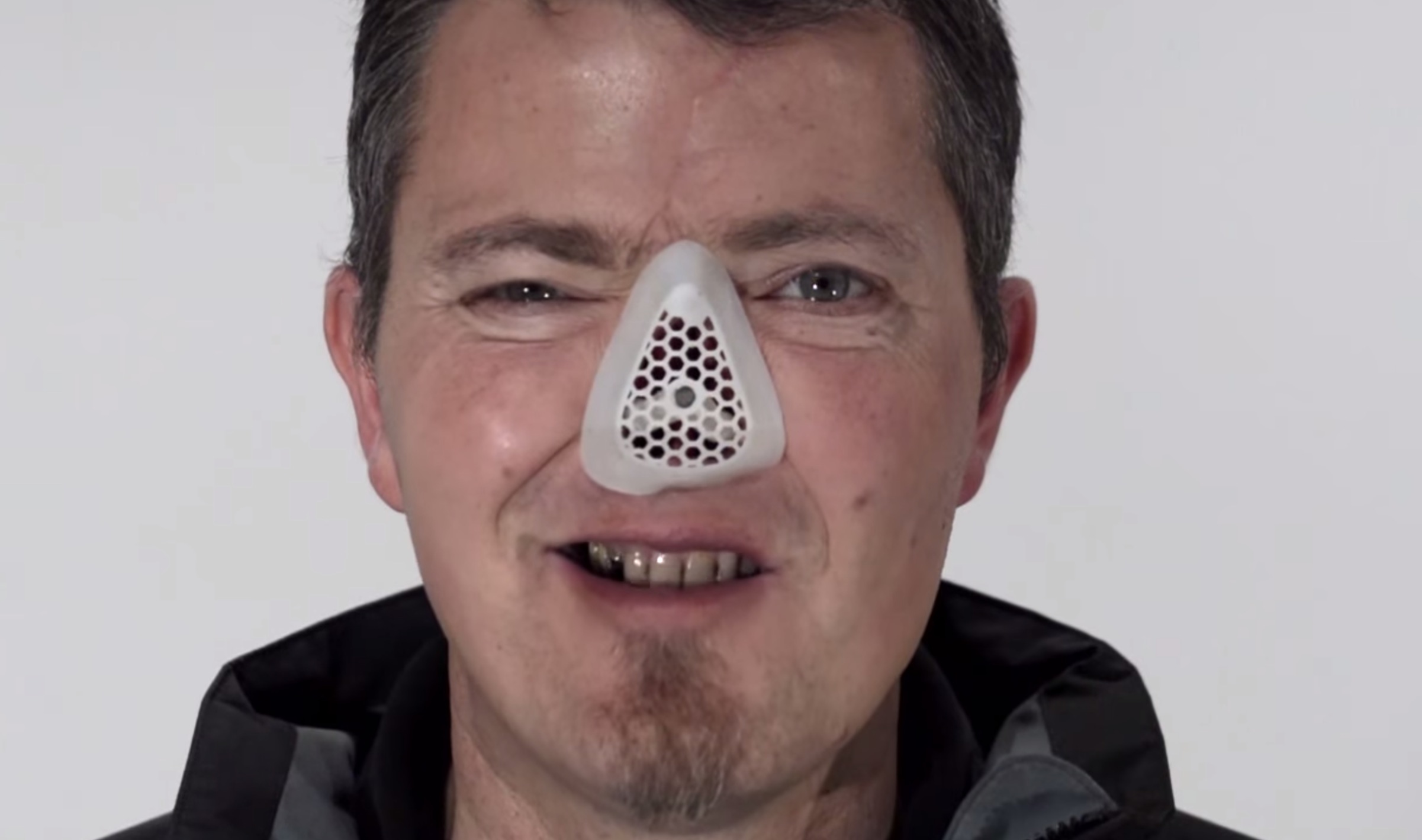A New Zealand designer has created a way to develop highly personalized 3D printed prosthetic noses.
The new approach not only provides a more attractive prosthetic for the wearer, but it also significantly optimizes the production process. Traditional facial prosthetics are expensive and take a long time to develop and fit. The new process involves a modern 3D approach, as explained by Challies:
We collected our participants facial morphology and implant configuration using the Artec Spider 3d-Scanner. We then used the scan data to model prototypes that conform to the morphology of our participant. Using Rhino 5 and parametric plug-in Grasshopper, we can constantly tweak our models in simple ways to accommodate subtle facial movements.
Although not visible when worn, the design includes a two-part mechanism to permit robust magnetic attachment – but at the same time permit removal. Traditional prosthetics are easily dislodged or even knocked off, something the wearers certainly don’t wish to happen.
The prosthetic was printed on a Stratasys Objet 350, which permits the use of multiple materials. This enables the design to include both hard and soft parts, essential for this purpose.
The design is currently competing for a James Dyson award, which challenges designers as follows: “Design something that solves a problem.”
This design certainly does.


